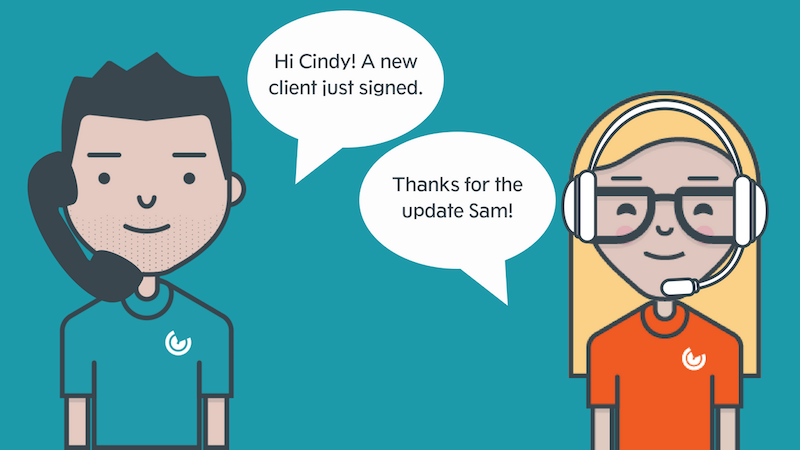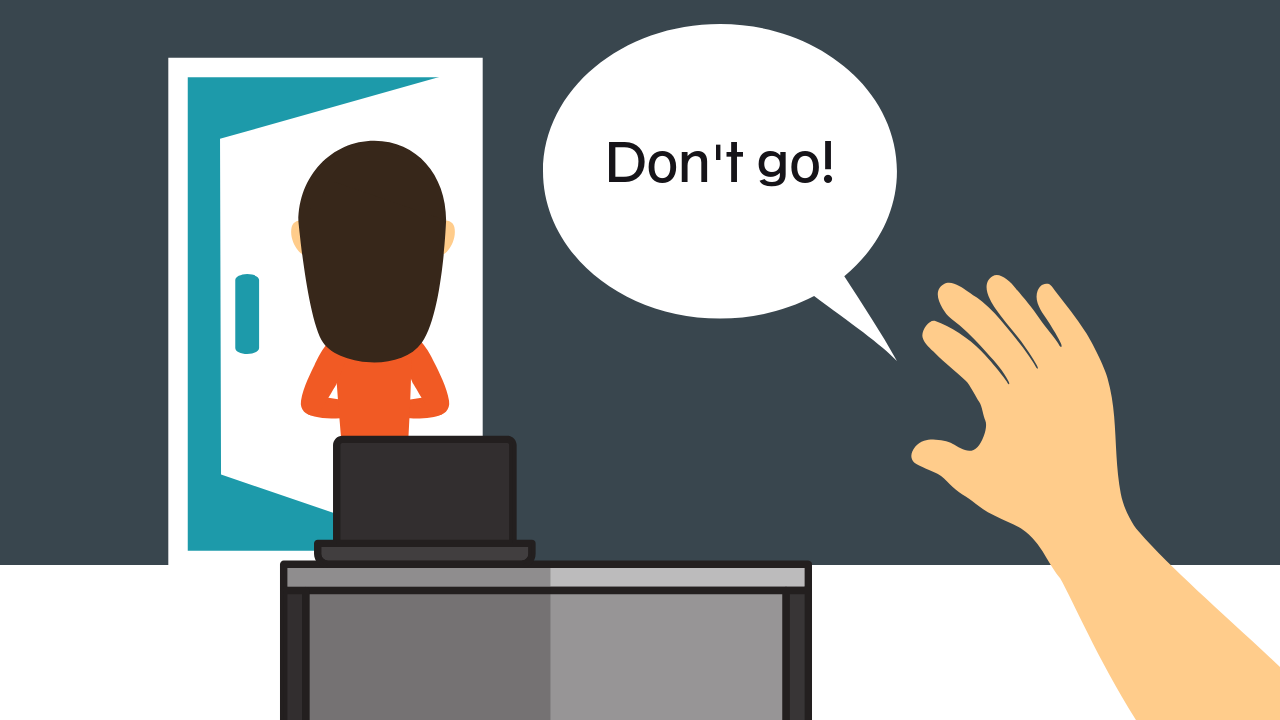1 min read
10 B2B Marketers' Customer Retention Strategies to Decrease Churn
Customer churn, also known as customer attrition, occurs when a business loses a customer. In a product-based business, say selling men's razors,...
I know what I am looking for, and would like to chat.
A team of data-driven marketers obsessed with generating revenue for our clients.
Because the proof is in the pudding.
At Campaign Creators we live by three principles: Autonomy, Mastery, Purpose.
4 min read
![]() Tammy Duggan-Herd
:
8/27/18 1:34 PM
Tammy Duggan-Herd
:
8/27/18 1:34 PM

It is an unfortunate fact that even in modern company culture, sales and customer service teams are often framed as independently functioning-- and what’s worse, incompatible-- entities. The reality is that, now more than ever, these teams must learn to closely collaborate with each other, not simply for the sake of nurturing new customer relationships but in order to maintain existing ones.
Today, we will be discussing the importance of bridging the gap between sales and customer service to improve customer retention, and where to begin the process of aligning strategy between the two.
According to Salesforce, 75% of consumers expect a consistent experience wherever they engage with your brand, and 67% of customers mention bad customer experiences as a reason for churn. Unsurprisingly, service and support go hand in hand with the customer experience, and can be required at any and all phases of the buyer’s journey from onboarding to post-sale; thus, they are central to retaining customers.
CS is uniquely positioned to address a customer’s early queries or pain points head on, and prevent a customer's experience from going sour in addition to educating them about company offerings. In an era of automation, customers want to feel a human connection with your company, so incorporating “live” elements into the customer experience can make all the difference.
Sales may not be what comes to mind when you think of customer retention, but it can actually be a vital part of your retention strategy. Your sales process represents the earliest impressions a potential client has of your company; it sets expectations for both the products and the dynamics delivered in your relationships, and creates a vision for customers from the beginning.
The sales process also presents an opportunity to distinguish from prospects who aren’t a good fit for the company from those that are. By understanding how to focus on the right prospects, the friction in your sales cycle can be greatly reduced. Additionally, a sales team can offer unique market and industry perspective and an understanding of which prospects to target and how.
CS and sales can empower one another if given the chance to identify the areas in which they can best help one another. When it comes to collaboration, customer service’s main strengths and roles include:
Sales, on the other hand, is best positioned for:
Did you know that only 3% of buyers trust sales reps? As HubSpot points out, the only professionals with less audience credibility include car salesmen and lobbyists! In this case, customer service is both a valuable information source and a credibility builder for sales; representatives gain insight into customer satisfaction and how they use company products through records kept with customer support software.
This enables them to make suggestions to sales about additional features which are most likely to fulfill customer needs. In time, the CS team can help to close the gap by informing customers about the implementation of the new features. Customers will undoubtedly place their trust in the expertise of representatives who have put in the time and effort to cultivate the relationship and provide relevant assistance.
It is important to begin by devoting attention to aligning incentives. While salespeople can be motivated to reach their sales quotas with larger commission checks, CS reps lack incentive to complete tasks outside of their current scope of work.
For this reason, the focus should be placed on areas where the two teams overlap, including product use and frequency of purchases, upsells and cross-sells, customer lifetime value and relationship duration, and overall customer churn. For example, it can be universally agreed upon that upselling services tactfully to existing customers is far more strategic than constantly cycling through new ones.
Proper documentation of ongoing customer relationships is critical for both teams. Salespeople require transparency in the records of customer service interactions with customers to gauge the right time to reach out, while customer service needs feedback about past sales processes. Most of the responsibility with the regards to documentation, however, does fall on the CS team in this case.
Having a digital access point for materials will improve communication while limiting back-and-forth exchanges. The easiest way to ensure your data remains under one roof is to invest in a good CRM software. Key materials and data can thus be made accessible to both teams at all times.
Literally “stating your terms” is another way to ensure your sales and CS teams remain on the same page. This means establishing common groundwork by clearly defining some important and common terms. Creating a company-wide glossary of concepts related to the buyer’s journey is critical to improving communication and avoiding inconsistency in reporting and goal-setting down the line. For instance, if CS and sales have different ideas about the point at which a lead becomes “sales-ready,” dysfunction can occur very quickly.
Finally, old-fashioned face-to-face communication can still prove useful in cross-team communication. Something as simple as a weekly 10-minute check-in to track goal progress and resolve potential concerns can foster positive relationships between teams. Individuals on each team should be assigned to head the alignment efforts.
Regular cross-team training helps expose team members to other parts of the company, which results in better understanding of one another’s roles and functions, as well as empathy towards common frustrations. Many non-sales professionals undervalue or simply misunderstand the nature of the sales team’s work, and adjusting skewed perceptions may help to build mutual respect.
Customer service representatives are perfect candidates for basic sales training because they already possess some skills which are crucial to sales. It is more than realistic to train them to handle the initial outreach and spend time qualifying leads before passing them to sales. Customer research, profiling, education, and re-engagement are all useful tasks for CS to be acquainted with.
Today’s customers have higher expectations than ever of the experience being delivered to them and the custom “fit” of the products and services offered to them. It’s for this reason that a well-managed relationship between customer service and sales is a win-win for both teams.
Sales grow and customer churn decreases when your customers are satisfied in their support and feel that they are receiving a consistently exceptional experience from a company that truly cares about their needs. By creating an informational and strategic feedback loop of insight, sales and CS can build customer profiles with attention to every detail, and truly earn the loyalty of your returning customers.
Investing in a marketing automation software can help you bridge the gap between sales and customer service. However, finding the right automation software for your company can be a daunting task. Check out your HubSpot Vs. Klayvio comparison and learn Which Marketing Automation System is Right for You.

1 min read
Customer churn, also known as customer attrition, occurs when a business loses a customer. In a product-based business, say selling men's razors,...

1 min read
How does feedback play a part in providing a better customer experience? Why is this question itself important? It isn't that getting customer...